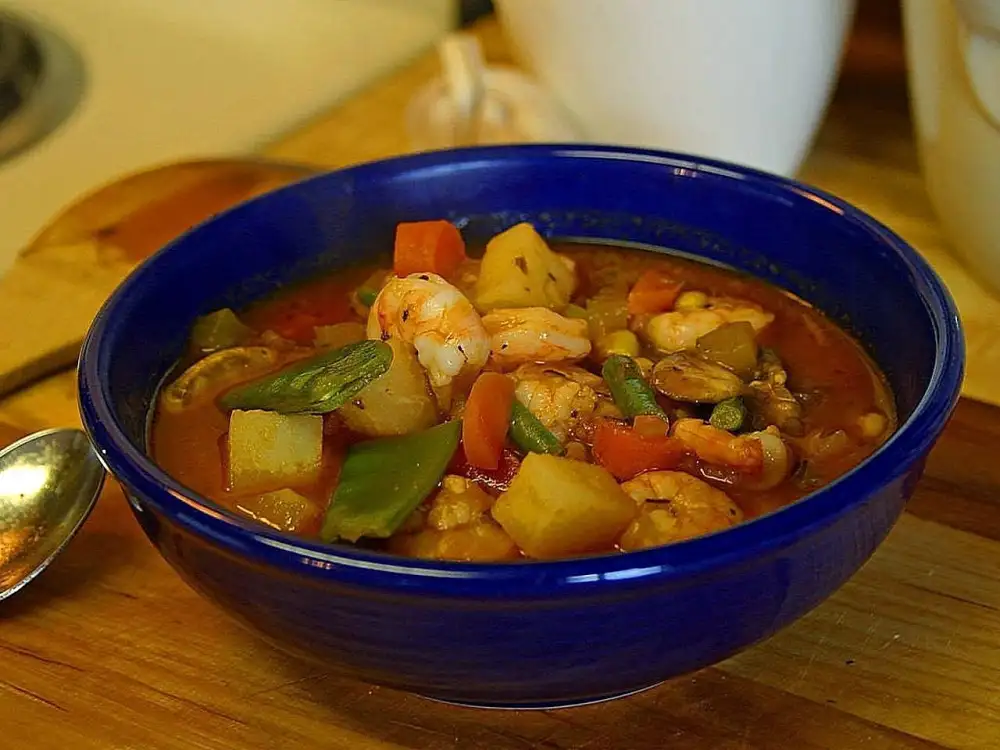Discover the Rich Flavors of New England Clam Chowder: A Classic Soup Recipe with Clams and Potatoes

- History and Origins of New England Clam Chowder
- Traditional Ingredients Used in New England Clam Chowder
- Step-by-Step Recipe for New England Clam Chowder
- Variations and Adaptations of New England Clam Chowder
- Tips and Tricks for Perfecting New England Clam Chowder
- Serving and Pairing Suggestions for New England Clam Chowder
- Health Benefits of New England Clam Chowder
New England Clam Chowder is a beloved classic soup that has been enjoyed for generations. This hearty dish is known for its rich and creamy texture, packed with tender clams and chunks of potatoes. With its origins dating back to the early 18th century, New England Clam Chowder has become an iconic symbol of New England cuisine. Whether you're a seafood lover or simply looking to indulge in a comforting bowl of soup, this recipe is sure to satisfy your taste buds and warm your soul. Join us as we delve into the artistry behind this timeless dish and discover the secrets to creating the perfect New England Clam Chowder.
History and Origins of New England Clam Chowder
New England Clam Chowder is a beloved soup that has a rich history and deep roots in the New England region of the United States. Its origins can be traced back to the early 18th century when it was first introduced by English settlers. The soup was initially made with simple ingredients such as clams, salt pork, onions, and potatoes, which were readily available in the coastal areas of New England.
Over time, New England Clam Chowder evolved and became a staple dish in the region. It gained popularity among sailors and fishermen who relied on its hearty and nourishing qualities during long voyages at sea. The soup provided them with sustenance and warmth, making it a comforting and satisfying meal.
The name "chowder" itself is believed to have originated from the French word "chaudière," which refers to a large cooking pot used for making stews or soups. This further emphasizes the influence of French culinary traditions on New England cuisine.
As New England Clam Chowder gained popularity, variations began to emerge. Some recipes called for the addition of milk or cream to create a creamy base, while others preferred a thinner broth-like consistency. Different regions within New England also put their own spin on the classic recipe by incorporating local ingredients such as bacon or herbs.
Today, New England Clam Chowder is considered an iconic dish that represents the rich maritime heritage of the region. It continues to be enjoyed by locals and visitors alike, serving as a reminder of New England's culinary traditions and its close connection to the sea.
Traditional Ingredients Used in New England Clam Chowder
New England Clam Chowder is a hearty soup that brings together a harmonious blend of flavors. The traditional ingredients used in this classic dish include fresh clams, potatoes, onions, celery, bacon or salt pork, butter, flour, milk or cream, and seasonings such as thyme and bay leaves.
The star ingredient of New England Clam Chowder is undoubtedly the clams. Freshly harvested clams are preferred for their sweet and briny flavor. These clams are shucked and their meat is chopped into bite-sized pieces before being added to the chowder.
Potatoes are another essential component of this soup. They add a comforting texture and help to thicken the chowder. Russet or Yukon Gold potatoes are commonly used due to their starchy nature, which helps create a creamy consistency.
Onions and celery provide a savory base for the chowder. They are sautéed in butter until tender and fragrant before other ingredients are added. This combination adds depth of flavor to the soup.
To enhance the richness of the chowder, bacon or salt pork is often included. These cured meats add smokiness and saltiness to balance out the sweetness of the clams and potatoes.
Butter and flour are used to create a roux, which acts as a thickening agent for the chowder. The roux is made by melting butter in a pan and whisking in flour until it forms a smooth paste. This mixture is then added to the soup to give it body.
Milk or cream is added towards the end of cooking to create a luscious and creamy broth. The choice between milk or cream depends on personal preference – milk creates a lighter consistency while cream adds indulgence.
Finally, seasonings such as thyme and bay leaves are added to enhance the overall flavor profile of the chowder. These herbs infuse the soup with aromatic notes, complementing the natural sweetness of the clams.
By using these traditional ingredients in New England Clam Chowder, you can experience a truly authentic and satisfying bowl of this beloved soup.
Step-by-Step Recipe for New England Clam Chowder
1. In a large pot, melt butter over medium heat. Add diced onions and cook until translucent.
2. Stir in flour to create a roux, cooking for about 2 minutes until lightly golden.
3. Slowly whisk in clam juice and chicken broth, ensuring there are no lumps.
4. Add peeled and cubed potatoes, thyme, bay leaves, and bring to a simmer. Cook until potatoes are tender.
5. Meanwhile, in a separate pan, cook chopped bacon until crispy. Remove bacon and set aside.
6. In the same pan with the bacon fat, sauté chopped clams until they release their juices.
7. Add cooked clams and their juices to the pot of chowder.
8. Stir in heavy cream and season with salt and pepper to taste.
9. Simmer for an additional 10 minutes to allow flavors to meld together.
10. Serve hot garnished with reserved crispy bacon bits and fresh parsley.
Enjoy this comforting bowl of New England Clam Chowder!
Variations and Adaptations of New England Clam Chowder
While the classic New England Clam Chowder recipe is cherished, there are several variations and adaptations that have emerged over time. Some chefs prefer to add additional ingredients to enhance the flavor profile. For example, bacon or pancetta can be added for a smoky twist, while thyme or dill can provide an herby freshness.
For those looking for a lighter version, substituting heavy cream with milk or half-and-half can reduce the richness without compromising taste. Vegetarian adaptations are also popular, using ingredients like mushrooms or tofu as a substitute for clams.
Regional adaptations have also become popular. In Rhode Island, clear clam chowder is preferred over the creamy version, made with a clear broth and fewer potatoes. Manhattan clam chowder takes on a tomato-based broth instead of cream, giving it a tangy and slightly spicy flavor.
Additionally, creative cooks have experimented with adding different seafood to the traditional recipe. Shrimp, crab meat, or even lobster can be incorporated to elevate the dish and create unique flavors.
The adaptability of New England Clam Chowder allows for personalization based on individual preferences and dietary restrictions. Whether you choose to stick to tradition or explore new flavors, there's no denying that this beloved soup continues to evolve while maintaining its comforting essence.
Tips and Tricks for Perfecting New England Clam Chowder
1. Use fresh clams: The key to a flavorful chowder is using fresh clams. Look for clams that are tightly closed and have a briny smell.
2. Save the clam juice: When shucking the clams, save the juice that comes out. This adds an extra layer of flavor to the chowder.
3. Cook the potatoes separately: To ensure that the potatoes are cooked perfectly, boil them separately before adding them to the chowder. This prevents them from becoming mushy.
4. Don't overcook the clams: Overcooking can make the clams tough and rubbery. Add them towards the end of cooking and remove them as soon as they open up.
5. Use bacon fat: Instead of butter or oil, cook your onions in bacon fat for added richness and depth of flavor.
6. Season wisely: Be mindful of salt when seasoning your chowder as clams can be naturally salty. Taste as you go and adjust accordingly.
7. Let it rest: After cooking, let your chowder rest for at least 15 minutes before serving. This allows all the flavors to meld together beautifully.
With these tips in mind, you'll be able to create a perfect bowl of New England Clam Chowder every time!
Serving and Pairing Suggestions for New England Clam Chowder
When it comes to serving and pairing New England Clam Chowder, there are a few suggestions that can enhance the overall dining experience. Firstly, serve the chowder hot in a deep bowl or bread bowl for a rustic touch. Garnish with fresh parsley or chives for added flavor and visual appeal.
To complement the creamy and savory flavors of the soup, consider serving some crusty bread on the side. The bread can be used to dip into the chowder or simply enjoyed alongside each spoonful. A classic choice would be a slice of sourdough bread or oyster crackers for added crunch.
For those looking to elevate their meal, consider pairing New England Clam Chowder with a crisp white wine such as Chardonnay or Sauvignon Blanc. The acidity of these wines helps cut through the richness of the soup while enhancing its flavors. Alternatively, if you prefer beer, opt for a light lager or pale ale to balance out the creaminess.
If you're hosting a gathering or want to offer more variety, consider serving some seafood appetizers like shrimp cocktail or smoked salmon alongside the chowder. This adds an extra layer of indulgence and complements the seafood theme of the dish.
Ultimately, serving New England Clam Chowder is all about creating a cozy and satisfying dining experience. Whether enjoyed as a comforting lunch on a cold winter day or served as an appetizer at a dinner party, this classic soup is sure to impress and leave your guests craving for more.
Health Benefits of New England Clam Chowder
New England Clam Chowder not only tantalizes the taste buds but also offers several health benefits. Clams, the star ingredient of this soup, are a great source of lean protein and omega-3 fatty acids, which promote heart health and reduce inflammation. The addition of potatoes provides a good dose of fiber, vitamin C, and potassium. Moreover, the chowder is low in saturated fat and cholesterol. With its nutrient-rich ingredients, New England Clam Chowder is a delicious way to nourish your body and indulge in a bowl of comfort.
In conclusion, New England Clam Chowder is a timeless classic that embodies the rich flavors of the region. Its creamy texture, briny clams, and hearty potatoes make it a comforting and satisfying soup. Whether enjoyed on a cold winter's day or as a taste of nostalgia, this chowder never fails to please. So next time you're craving a taste of New England, don't hesitate to whip up a pot of this delicious soup and savor the richness it brings to your table.
Published: 01. 12. 2023
Category: Food



